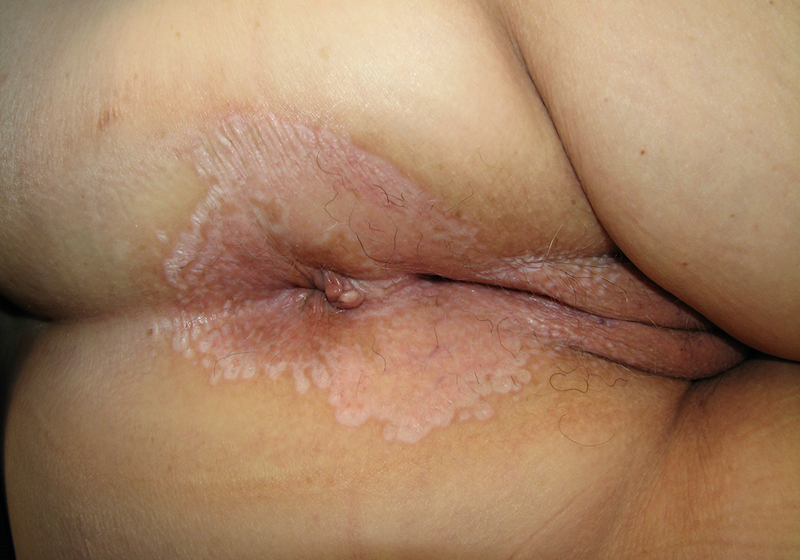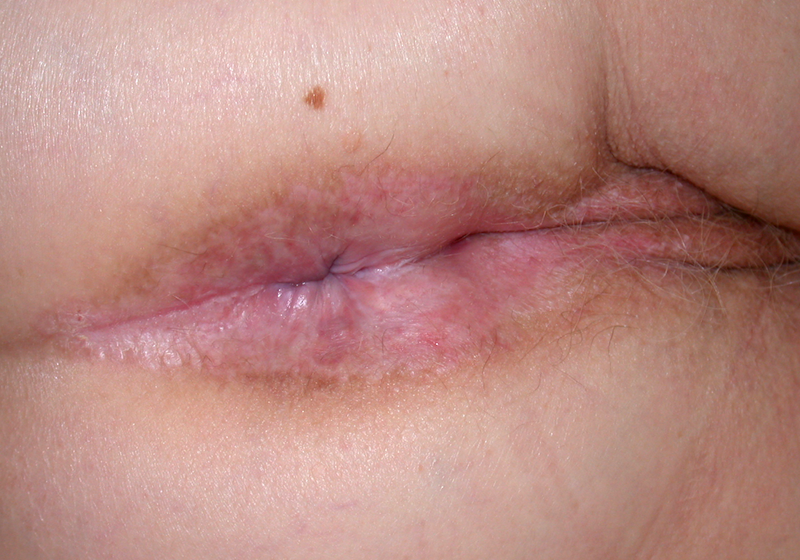What is it?
Lichen sclerosus is a chronic, progressive skin disorder characterised by inflammation, epithelial thinning, hypopigmentation and scarring.
It is more common in women than men and commonly asymptomatic:
- In men, it most commonly affects the foreskin and urethral meatus.
- In women, it is principally seen around the introitus and labia minora.
It may also affect the perianal area in both sexes. The aetiology is unclear but is thought to have genetic and autoimmune associations.
Patients can be asymptomatic although typical symptoms include chronic itch and irritation ('pruritis ani'). They often mistake these symptoms for chronic or recurrent thrush. Other perianal symptoms may include painful defaecation, fissures and rectal bleeding.
Clinical presentation
The affected skin is typically white and crinkled, like tissue paper.
Areas of atrophy and fissuring are seen as the condition progresses.
Advanced lichen sclerosus can cause:
- phimosis and meatal narrowing in men
- atrophy and resorption of the labia in women, leading to narrowed introitus and dyspareunia
Skin cancers may develop due to chronic inflammation and the patient should have surveillance for atypical lumps or ulcers.
Warning
May contain graphic images of human anatomy, medical conditions and medical procedures. Viewing discretion is advised.
Lichen sclerosus
Management
- Treatment requires ultrapotent topical steroids (ointment or cream).
- Patients should be reviewed annually because of the risk of squamous cell cancer.


